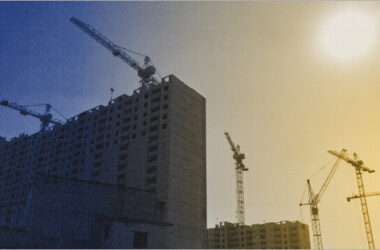In the domain of construction projects, unforeseen circumstances and risks can often disrupt timelines, budgets, and overall project success. One critical aspect of mitigating these risks is through comprehensive insurance coverage tailored to the specific needs of the construction industry. In this context, Erection All Risk (EAR) Insurance stands out as a vital safeguard for project owners, contractors, and stakeholders alike.
What is Erection All Risk Policy?
Erection All Risk (EAR) Insurance is a specialized form of insurance designed to provide comprehensive coverage for the risks associated with the erection, installation, and commissioning of machinery, plants, and other high-value construction projects. This type of insurance offers protection against a wide range of perils, including but not limited to fire, theft, accidental damage, vandalism, and natural disasters.
EAR insurance typically covers all phases of a project, from the initial transit of equipment to the final testing and commissioning stages. By mitigating financial losses arising from unforeseen events during the erection process, EAR insurance plays a crucial role in ensuring the continuity and success of construction projects, providing peace of mind to project owners, contractors, and other stakeholders.
Coverages Provided in Erection All Risk Policies in India
Erection All Risk (EAR) Insurance policies in India typically offer comprehensive coverage tailored to the specific needs of construction projects. Some common coverages provided in EAR insurance policies in India include:
- Material Damage:This coverage protects against physical loss or damage to the insured property, including machinery, equipment, and construction materials, arising from perils such as fire, lightning, explosion, theft, vandalism, and accidental damage.
- Third-Party Liability:EAR insurance typically includes coverage for third-party liability, which indemnifies the insured against legal liabilities arising from bodily injury or property damage caused to third parties during the construction process.
- Transit Risks:EAR policies often extend coverage to include risks associated with the transit of equipment and materials to and from the construction site, protecting against losses due to accidents, theft, or damage during transportation.
- Testing and Commissioning:Coverage may also encompass losses incurred during the testing and commissioning phase of the project, ensuring protection against damage or malfunction during these critical stages.
- Delay in Start-Up:Some EAR insurance policies offer Delay in Start-Up ( DSU) coverage, compensating the insured for financial losses resulting from project delays caused by insured perils, such as material damage or unforeseen events.
- Professional Fees:Certain policies may include coverage for professional fees incurred in the repair, replacement, or reinstatement of insured property, such as architectural, engineering, or consulting fees.
- Escalation Costs:Coverage for escalation costs may be provided to account for increases in construction costs due to factors such as inflation, changes in regulations, or unforeseen circumstances.
It’s important for policyholders to carefully review the terms, conditions, and exclusions of their EAR Insurance Policies to ensure they have adequate coverage for their specific project requirements and risk exposures. Additionally, endorsements and optional coverages may be available to tailor the policy to the unique needs of individual projects.
Coverages Excluded in Erection All Risk Policy
Exclusions in Erection All Risk (EAR) Insurance policies in India may vary depending on the insurance provider and specific policy terms. However, some common exclusions typically found in EAR insurance policies include:
- War and Terrorism:Losses or damages arising directly or indirectly from war, invasion, acts of foreign enemies, hostilities (whether war be declared or not), civil war, rebellion, revolution, insurrection, military or usurped power, or terrorism.
- Nuclear Risks:Losses or damages caused by nuclear reactions, nuclear radiation, or radioactive contamination.
- Wilful Acts:Losses or damages resulting from willful acts, gross negligence, or intentional misconduct by the insured or their representatives.
- Wear and Tear:Normal wear and tear, gradual deterioration, rust, corrosion, and gradual deterioration over time are typically excluded from coverage.
- Faulty Design or Workmanship:Losses or damages caused by faulty design, defective materials, or poor workmanship are often excluded from coverage. This exclusion may extend to errors in construction, installation, or engineering.
- Consequential Losses:Indirect or consequential losses, such as loss of profit, loss of revenue, loss of contracts, or financial losses resulting from project delays, are generally excluded from coverage.
- Pre-existing Conditions:Losses or damages caused by pre-existing defects, deficiencies, or conditions known to the insured at the time of policy inception are typically excluded from coverage.
- Regulatory Non-Compliance:Losses or damages resulting from the insured’s failure to comply with statutory regulations, building codes, or legal requirements may be excluded from coverage.
It is essential for policyholders to thoroughly review the exclusions outlined in their EAR Policies to understand the limitations of coverage and assess potential gaps in protection. Additionally, endorsements or additional coverages may be available to address specific exclusions or enhance coverage as needed.
Why is Erection All Risk Policy Important for Businesses?
Erection All Risk (EAR) Insurance holds significant importance for businesses in India involved in construction projects for several key reasons:
- Comprehensive Protection: EAR Policy provides comprehensive coverage against a wide range of risks associated with the erection, installation, and commissioning of machinery, plants, and other high-value construction projects. This coverage helps safeguard businesses from financial losses arising from unforeseen events such as fire, theft, accidental damage, and natural disasters.
- Risk Mitigation: Construction projects are inherently exposed to various risks, including damage to property, third-party liabilities, and project delays. EAR Policy helps mitigate these risks by providing financial protection against potential losses, enabling businesses to proceed with confidence and focus on project execution.
- Compliance Requirement: In many cases, EAR Policy may be a mandatory requirement stipulated by project owners, lenders, or regulatory authorities. Businesses in India must adhere to these requirements to participate in construction projects and secure financing. Having EAR Policy in place ensures compliance with contractual obligations and regulatory standards.
- Project Continuity: Construction delays or disruptions can have significant ramifications on project timelines, budgets, and profitability. EAR Policy helps ensure project continuity by providing coverage for losses incurred during the construction process, including delays in start-up, damage to equipment, or unforeseen events that may otherwise halt project progress.
- Financial Stability: By transferring the risk of potential losses to an insurance provider, businesses can protect their financial stability and minimize the impact of adverse events on their bottom line. EAR Policy provides a safety net that allows businesses to mitigate the financial consequences of unexpected circumstances, thereby preserving liquidity and profitability.
- Enhanced Competitiveness: Having EAR Policy in place can enhance the competitiveness of businesses bidding for construction projects in India. Demonstrating adequate insurance coverage signals financial responsibility and risk management capabilities, which can be attractive to project owners and stakeholders seeking reliable partners for their projects.
To sum up, Erection All Risk Policy is crucial for businesses in India engaged in construction projects as it provides comprehensive protection, mitigates risks, ensures compliance, supports project continuity, preserves financial stability, and enhances competitiveness in the marketplace. Investing in EAR Insurance is a prudent risk management strategy that can help businesses navigate the complexities of the construction industry and achieve project success.
Frequently Asked Questions
- How is the premium for Erection All Risk Policy calculated?
The premium for Erection All Risk (EAR) Insurance is determined by various factors specific to the construction project and the insured party. Considerations include project value, coverage type and extent, construction activities, project site location, duration, and insured party’s risk profile. Insurers may also assess contractor experience, material quality, equipment, unique project risks, historical claims data, and market trends. Premium rates are tailored to each project’s characteristics and risk exposures, aligning coverage with insured party needs while ensuring policy financial viability.
- Can Erection All Risk Policy be customized to specific project needs?
Erection All Risk Policy can indeed be customized to suit the unique needs of individual construction projects. Insurance providers recognize the distinct risks and requirements of each project and offer flexibility in tailoring coverage accordingly. Customization options may include adjusting coverage limits, extending coverage for additional perils or project phases, adding endorsements for specific risks, and modifying policy terms to match contractual obligations. Working closely with the insured party allows providers to develop a bespoke insurance solution that effectively addresses project-specific risks, providing peace of mind to all stakeholders. This customization ensures that the EAR Policy remains comprehensive, relevant, and adaptable throughout the project lifecycle.
- What is the claims process like for Erection All Risk Insurance?
The claims process for Erection All Risk Insurance involves several steps to ensure a thorough assessment and expedient resolution for the insured party. Upon occurrence of an insured event, the insured notifies the insurer and submits a claim. The insurer assigns a claims adjuster to investigate, assessing damage extent and coverage. This may involve site visits, interviews, and documentation review. Once investigation is complete, the insurer determines payable amount and processes the claim. Resolution may involve negotiation for fair settlement. Throughout, the insurer aims for prompt, efficient handling, ensuring compliance and facilitating insured party recovery while minimizing project disruption.








